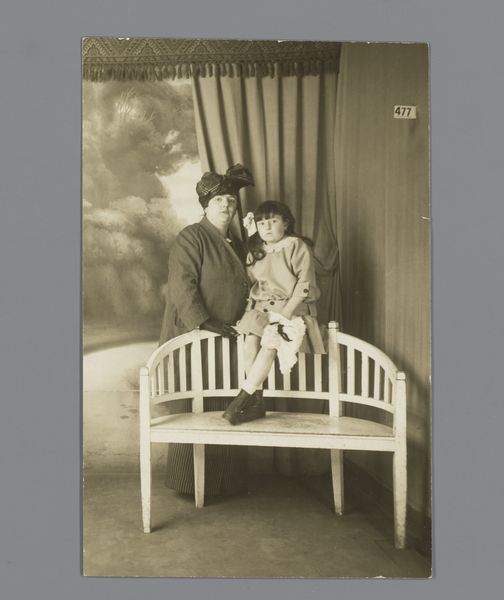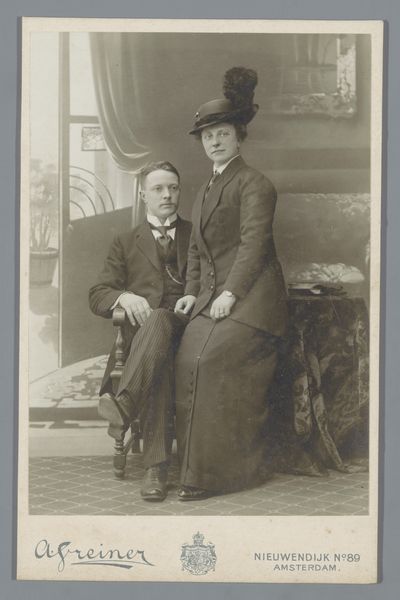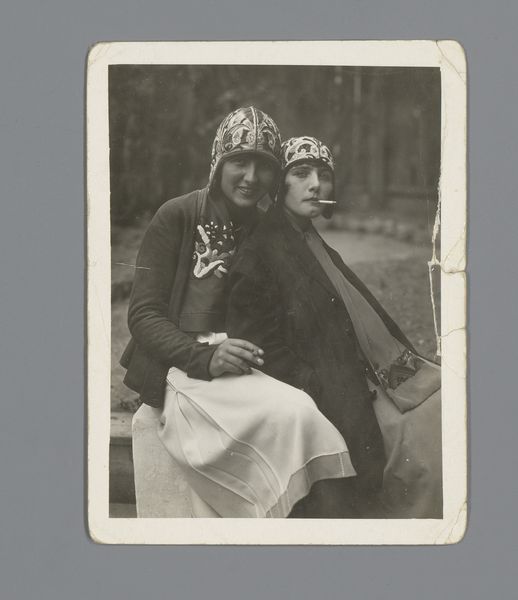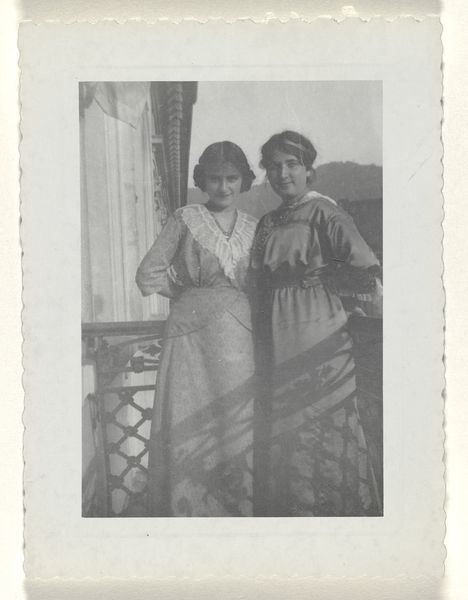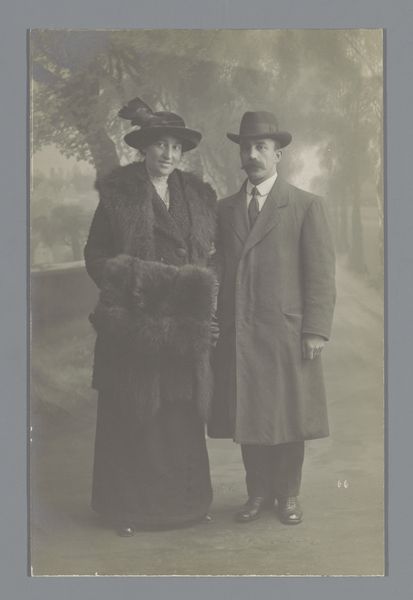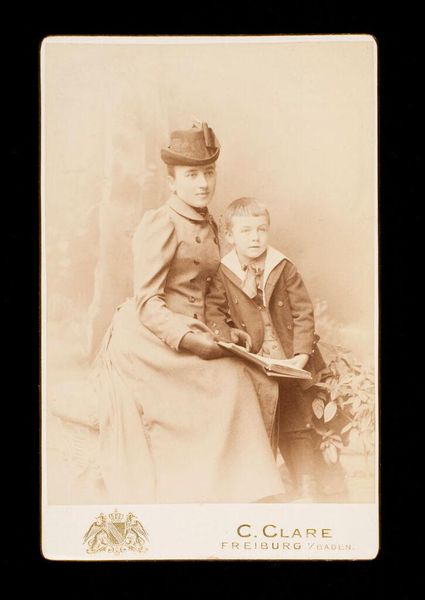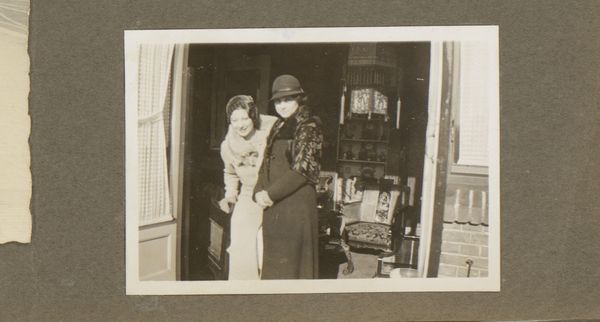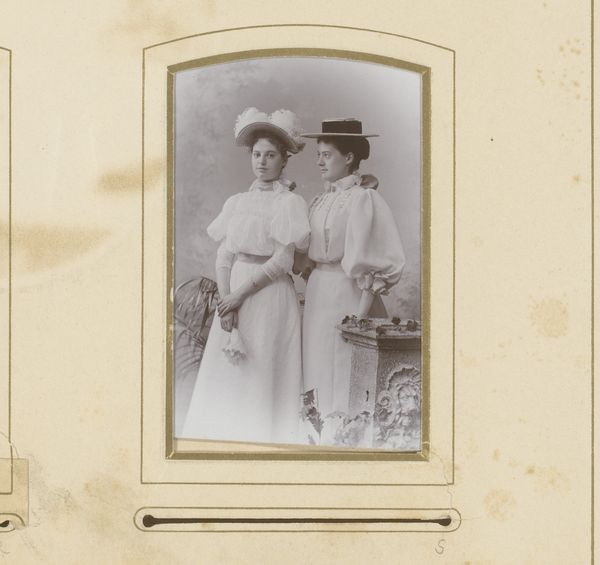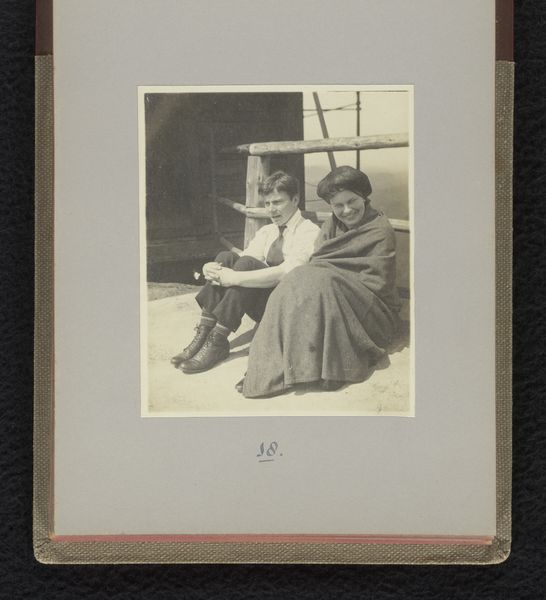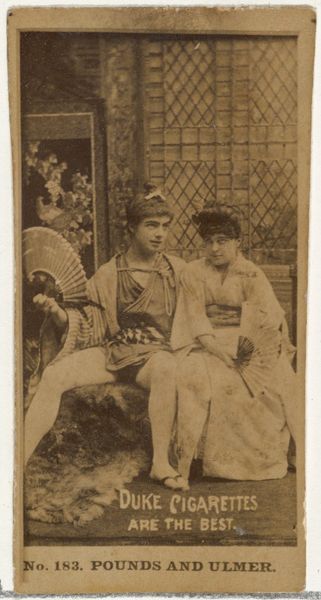
photography
#
portrait
#
photography
#
genre-painting
Dimensions: height 134 mm, width 88 mm
Copyright: Rijks Museum: Open Domain
Curator: This is a striking early photograph, likely dating from before 1930. The Rijksmuseum holds this intriguing piece titled "Double Portrait of Two Unknown Women," attributed to American Automatic Fotografie. Editor: There's a captivating somberness about this photograph; the sepia tones deepen the seriousness of the subjects’ postures. I notice the details in their hats and coats especially. Curator: Indeed. Notice the arrangement, how the seated woman's posture guides the eye and intersects with the vertical lines of the backdrop. Her direct gaze, confronting the viewer, is powerfully complemented by the other woman who’s slightly off to the side. Editor: What draws me in is what it conveys about work and daily lives through these clothes—the materials likely speak volumes about the sitters' status and relationship to manufacturing of these garments, and perhaps their relative access to particular industries. Curator: An astute observation. The material culture presented acts as an anchor for speculation, yes. The play of light and shadow articulates space and mass but the backdrop also creates artifice, it underscores the studio context—drawing attention to its constructedness. Editor: That backdrop—a seemingly painted landscape. It suggests the democratizing potential of the photograph attempting to simulate class signifiers within a controlled environment. These details emphasize accessibility and consumerism in this photographic genre. Curator: Perhaps it is their collective effect of implying rather than stating what’s more affecting than any symbolic attribute. The formal unity underscores what’s not there, perhaps inviting further introspection. Editor: For me, this portrait highlights a period where personal and industrial economies shaped both identity and the modes by which identities were documented, hinting at a time where garments narrated labor and social roles in potent ways. Curator: Precisely, the photographic art of the period gives way to the social theater, and it becomes possible to think anew about what the visible signified beyond itself. Editor: An opportunity, then, to engage not only with aesthetic composition but also material significance – reflecting on past lives that intersect with our own present-day consumption and visual understanding.
Comments
No comments
Be the first to comment and join the conversation on the ultimate creative platform.

